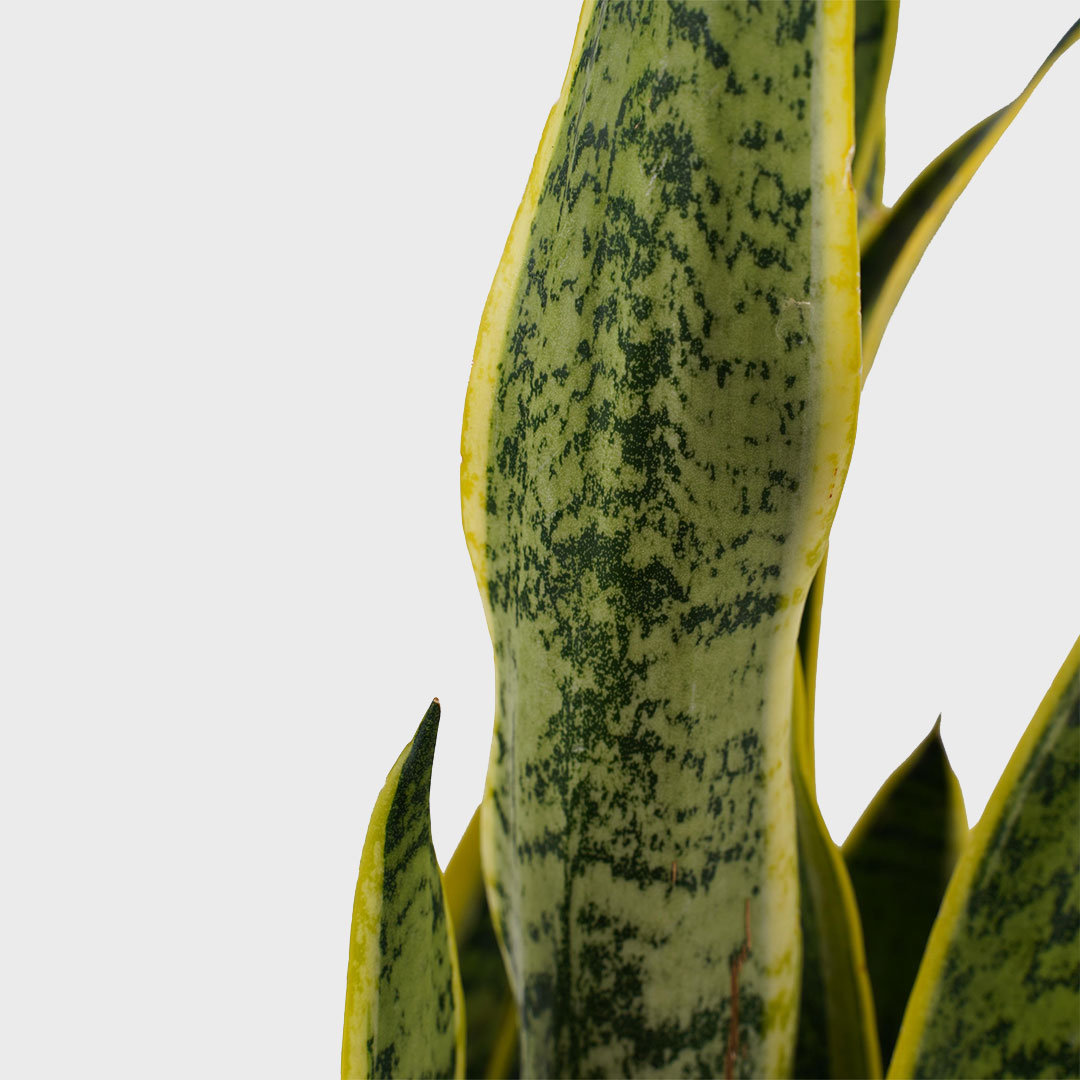Facts About Snake Plant Leaves Turning Yellow Revealed
Wiki Article
The Snake Plant Leaves Turning Yellow PDFs
Table of Contents5 Easy Facts About Snake Plant Leaves Turning Yellow ShownSome Known Details About Snake Plant Leaves Turning Yellow Some Ideas on Snake Plant Leaves Turning Yellow You Should KnowThe Best Strategy To Use For Snake Plant Leaves Turning YellowExcitement About Snake Plant Leaves Turning YellowThe Snake Plant Leaves Turning Yellow Ideas
If overwatering in snake plants is not remedied, the yellow spots of your mother-in-law's tongue plant will turn dark brownish or black. To eliminate any kind of various other root causes of snake plant leaf yellowing, remove the plant from its pot and examine the origins to see if they're soaked and have a nasty scent.
Here's exactly how to save a snake plant that's turning yellow: Quit irrigating your snake plant till the dirt dries out up completely if the yellowing results from overwatering. Return to watering, but not even more than once each week. As a policy of thumb, prevent sprinkling your serpent plant up until the leading 2 inches of the soil really feel completely dry.
Things about Snake Plant Leaves Turning Yellow
This will certainly assist to improve drain rates, considering the high temperature and sunlight conditions throughout the day. Correct water drainage involves utilizing a fast-draining soil mix and a growing pot with drainage holes at the base. It is best to make use of a dirt mix which contains perlite and crude sand for quick drainage.There's a silver lining as you can expand new plants by proliferating the few remaining fallen leaves that are still healthy. References.

Also, bugs, illness, overfeeding, lack of some nutrients, or being rootbound are feasible causes. Let us now take a look at each of these causes. We intend to give you common signs related to each reason and what to do. Water is vital in taking in nutrients essential for chlorophyll. Lack of water causes the decomposition of chlorophyll.
Snake Plant Leaves Turning Yellow Can Be Fun For Anyone
Snake plants enjoy a damp, not soaked, and you shouldn't permit the potting mix to dry out totally for a lengthy time. We recommend sprinkling your snake plant after the soil dries out entirely or many of it is completely dry.A big one might cause overwatering, and if it is too little, your plants will dry out swiftly. Last however not the very least, never adhere to a serpent plant watering session.

How Snake Plant Leaves Turning Yellow can Save You Time, Stress, and Money.
You can likewise get conservatories. In hot summers or during warm front, take your plants to cooler places. Do not place your plants near home heating system vents, radiators, fireplaces, or anything that produces heat. Last yet not the very least, stay clear of temperature unexpected declines and spikes. They will emphasize your plant.A lack will certainly trigger in-between capillaries yellowing on young leaves. When it is doing not have, plants build up nitrates yet fall short to use them to make healthy proteins.
Although snake plants have a record for being virtually impossible to eliminate, they however experience a fair share of concerns. Snake Plant Leaves Turning Yellow. You are not the only one that has observed that your snake plant's fallen leaves are transforming yellow. We will check out the reasons serpent plant leaves turn yellow and how to manage it
The 7-Second Trick For Snake Plant Leaves Turning Yellow
Because serpent plants are vulnerable to root rot, they will certainly not flourish if watered excessively. This is typically the optimal equilibrium if you allow your plant completely dry out but do not let it stay dry. You can sprinkle your plant once more as quickly as the soil appears completely dry to the touch.A damp container will certainly consider substantially heavier than a dry pot, so ultimately, you should have the ability to determine how dry your why not try here crop is based on the mass of its container. Snake plant leaves may become yellow if you let your plant dry out, then wait until the soil is completely dry before rewatering.
You need to take into consideration even more than simply exactly how usually you water serpent plants. You likewise should consider what strikes the liquid when it is placed in the pot. After sprinkling your plant, you must not let the origins stick around in water for a couple of days due to the fact that this can trigger root rot.
Not known Incorrect Statements About Snake Plant Leaves Turning Yellow
Yellowing fallen leaves can be dealt with by giving the serpent plant the best surroundings and interest. Below are some go to my site of the reasons serpent plants turn yellow and soft.You just require to provide enough supply and make certain right drainage to permit the additional water to drain out. Not also much nor insufficient; there will be an ideal atmosphere for fungis health problems if there is any standing water. The snake plants can be sprinkled every two to six weeks.
After positioning them in the morning sun, you will certainly notice that serpent plants' development rate would certainly increase and appear healthier. Nevertheless, positioning them in the outdoor morning sunlight will require more water, so once each week is adequate. Nonetheless, if the area receives too much sunlight and the surface area feels completely dry, you can sprinkle them twice visit the site per week.
Report this wiki page